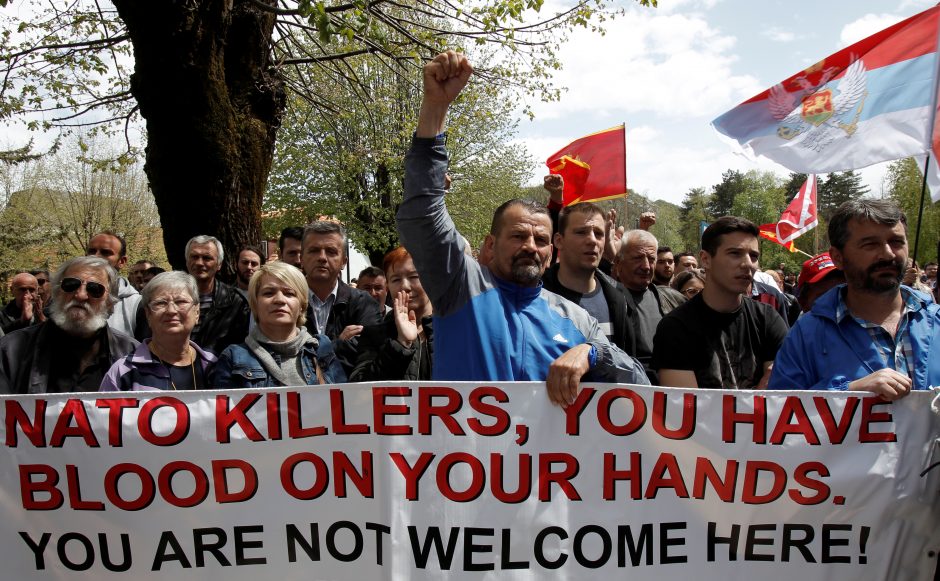By Dr. Vladislav B. Sotirovic
At least from the very academic viewpoint, war is a condition of armed conflict between at least two sides (but, in fact, states). There are, historically, several types of warfare as conventional warfare, civil war, lightning war (blitzkrieg in German), total war, hegemonic war, liberation war, war on terrorism, etc. However, according to the used warfare technique, there is, for instance, little war (guerrilla war in Spanish) or according to the (counter)balance of warfare sides, there is asymmetric war as an example.
Asymmetric warfare exists in the case when two sides of combat forces (two states, two blocs, a state vs. one military bloc, etc.) are very or even extremely different regarding their military and other capacities to fight each other. They are as well as very different in the terms of their areas of comparative strategic advantage, Therefore, the confrontation between such two different sides is coming to turn on one belligerent side’s ability/capacity to force the other side to fight on their own terms and conditions.
Another feature of asymmetric warfare is that the strategies that the weaker side has consistently adopted against the stronger side (enemy) often involve targeting the enemy’s domestic political base as much as its forward military capabilities. Nevertheless, in essence, usually, such strategies involve inflicting pain over time without suffering unbearable retaliation in return.
In practice, a very illustrative example of asymmetric warfare was when on March 20th, 2003, US-led coalition forces invaded (made aggression) Iraq of Saddam Hussein with the objective of locating and disarming suspected (and not existing) Iraqi weapons of mass destruction (WMD). The coalition forces lead a very fast and overwhelmingly successful military campaign with the occupation of the Iraqi capital Baghdad. Consequently, the Iraqi military forces collapsed and finally surrendered to the occupants. US President Bush Junior declared the official end of major fighting operations in Iraq on May 2nd, 2003. On one hand, historically speaking, the casualties during the conventional part of the war were low for major modern and contemporary military conflicts. However, on other hand, the fighting soon has been evolved into an insurgency in which the combination of guerrilla/terrorist attacks on both Western coalition forces and the civilians of Iraq became the everyday norm. Therefore, by the spring of 2007, the coalition had suffered some 3.500 men and around 24.000 wounded. Some independent sources estimate that total Iraqi war-related deaths are up to 650.000 (the minimum is 60.000). The 2003 Iraqi War is an example of how the asymmetric war can be transformed into guerrilla warfare with unpredictable consequences for the originally victorious side. The same happened with the war in Afghanistan in 2001 which started as an asymmetric war but was finished twenty years later with the victory of Taliban guerrilla forces over the Western coalition.
Nevertheless, the 2003 Iraqi War illustrated several themes that have been prominent in the talks regarding the future development of warfare including the question of asymmetric war as well. In this particular case, one of the focal features of asymmetric warfare was the fact that the fast military victory of the US-led coalition saw the Iraqi armed forces overrun by the technological superiority of the advanced weapons and information systems of the West, particularly of the US. It simply suggested that military revolution was on the way (RMA – revolution in military affairs).
Another feature of asymmetric warfare in Iraq in 2003 was that US-employed military (operational) doctrine has been as well as of focal importance. In other words, the military success of the Western coalition forces was not only the result of pure technological supremacy, but it was as well as the result of superior operational doctrine. A very fast and comparatively bloodless victory for the US-led coalition launched the view that in the post-Cold War 1.0 strategic environment, there were few inhibitions on the use of force by the US Army as at that time still being a hyper-power in global politics and international relations. Therefore, it was not the threat from the time of Cold War 1.0 that some regional conflict or war would escalate into nuclear warfare between two superpowers. In addition, Washington was healing the trauma of Vietnam through asymmetric wars against Yugoslavia in 1999, Afghanistan in 2001, and Iraq in 1991/2003.
It can be said that in the case of the asymmetric war against Iraq in 2003, a focal point was US dominance of information warfare in both the military sense (using satellite systems for communication, weapons targeting, reconnaissance, etc.) and civilian sense (manipulation of the civilian communications and global media images of the warfare). Consequently, Washington succeeded at least in the West to produce an understanding of the war as pro-democratic and preemptive (against the use of WMD by Iraqi forces, in fact, against Israel).
Nevertheless, the point was that this conflict did not end with the surrender of the regular forces (army) of Iraq. It, actually, confirmed some arguments of those who supported the idea of “post-modern” warfare (or “new” wars) out of the regular (standard) type of wars (army vs. an army). On other hand, the ability to operate using complex informal military networks allowed the Iraqi rebels after the regular phase of the war in 2003 to conduct effective asymmetric warfare, regardless of the overwhelming superiority of Western military technology. The insurgents, as well as, have been able to use the global media in order to present their warfare as a liberation war against Western neo-imperialism. However, the techniques used by the rebels were brutal (terrorism), ruthless, and in many cases targeted against the civilian population, in a campaign supported by outside structures (both governmental and non-governmental) and finance. It is sustained by an overtly identity-based campaign and reflects at the same time the features of the concept of the “post-modern” or “new” wars.
January 4, 2023

